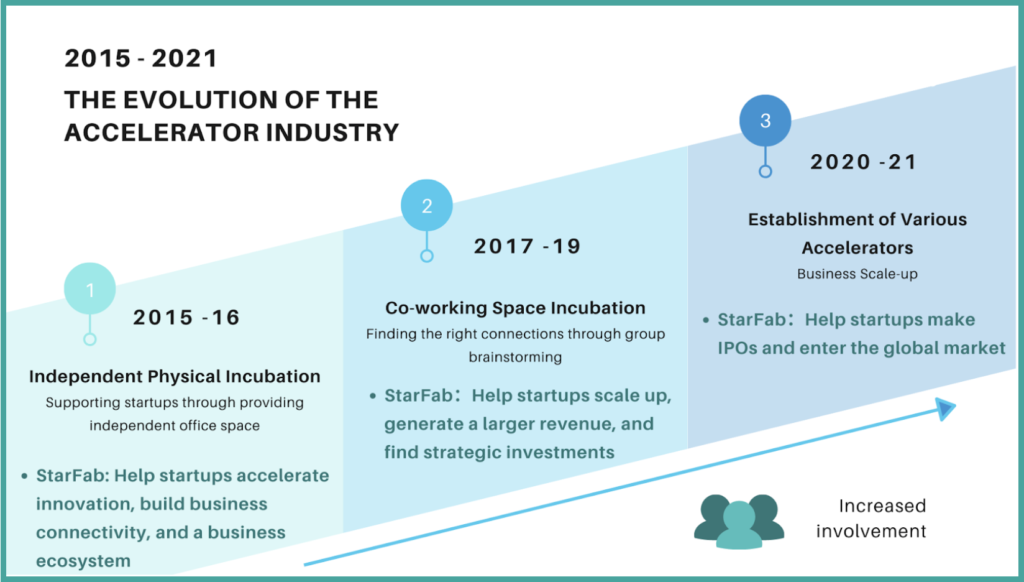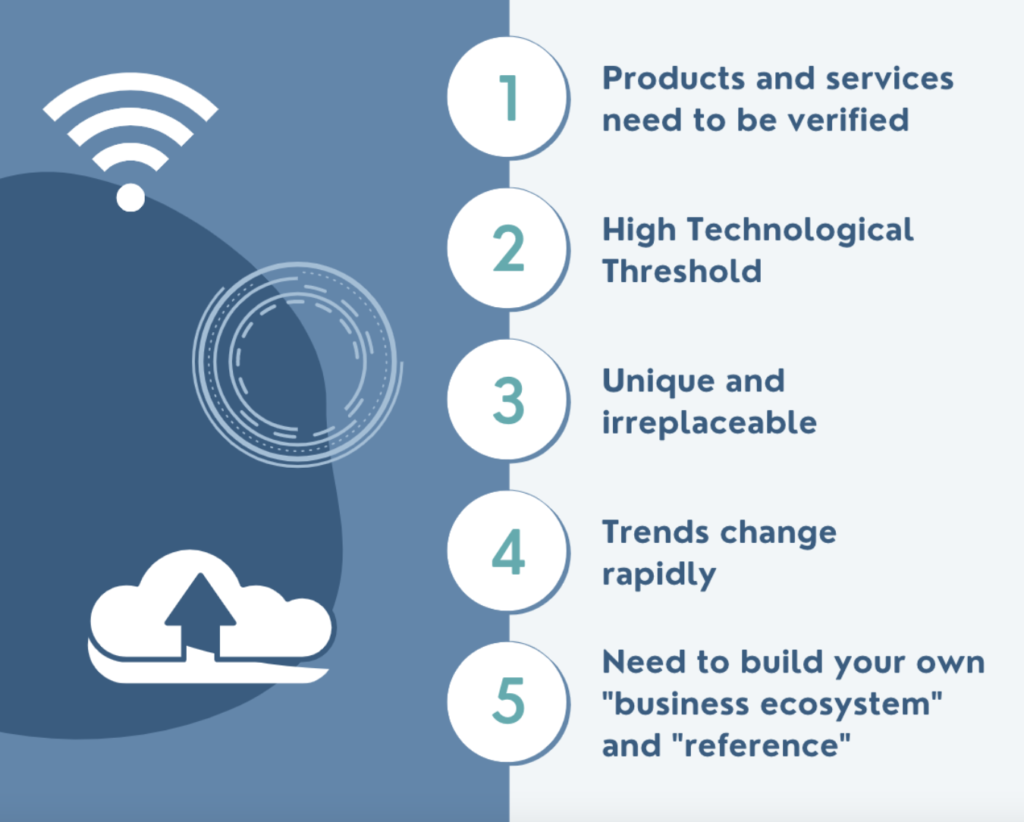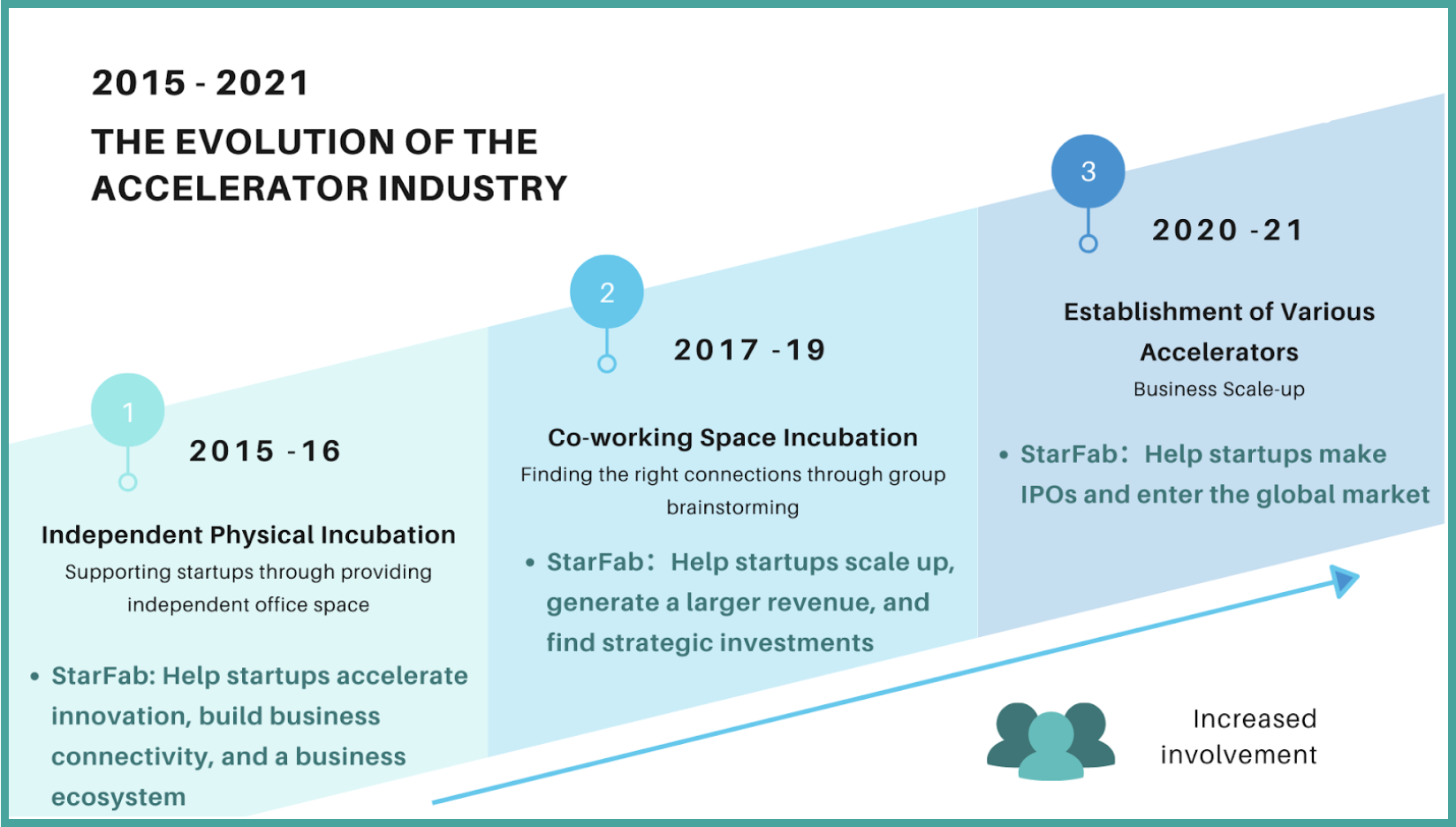【StarFab Newsletter Issue 1】A Discussion Around the Accelerator Industry and Ecosystem
Hi! My name is Miranda, and I am starting a series of StarFab newsletters that cover the tech startup ecosystem! I will be interviewing founders and business leaders across the industry and, from there, generate discussion around entrepreneurship and the accelerator industry. Join me in learning more from their expertise!
In recent years, an increasing number of accelerators have emerged in response to growing entrepreneurs establishing startups. The Covid-19 pandemic has also been disrupting various businesses globally since 2020. Through this interview with our StarFab founders, we hope to give you some insights into how the startup accelerator industry has changed over the years. Additionally, our StarFab CEOs Amanda and Jack will be sharing their inspiring entrepreneurship experience in helping tech startups scale up their businesses. Without further ado, let’s get started!
StarFab was founded in 2016; with that said, how has the accelerator industry changed over the past 5 years?

AMANDA: In Taiwan, the industry trend over the past five years can be categorized into three stages:
Stage 1: In 2015, most Taiwanese accelerators focused on providing startups physical incubation to support startups. However, when StarFab was established in 2016, our mission was already different from other accelerators in Taiwan. Our mission since the beginning was to help startups accelerate innovation, build business connectivity, business ecosystem, and enhance startup business plans.
Stage 2: The second stage of transformation lasted from 2017 to 2019. Over the three years, most accelerators in Taiwan switched from providing independent working spaces to a large co-working space for startups. Through many people’s brainstorming, they hope that entrepreneurs would find the right people to work with. However, at the second stage, StarFab focused on “how to help startups scale up” – actively support startups to land business orders and find strategic investments.
Stage 3: Lastly, stage three is from 2020 to 2021, where StarFab helps startups with potential make the IPO list and enter the global market. At this stage, our ultimate mission is to help startups grow exponentially.
JACK: I think the biggest change is that more people are now in the accelerator industry. At the same time, the government has also dedicated more resources.
I believe that there are positives and negatives from this trend. The positive is that this can make the industry more active. On the other hand, the quality of accelerators could be unstable. For startups, they may have a harder time determining the accelerator to provide them with the best resources that suit them at their stage of starting a business.
Following, we can then see another trend. StarFab has been utilizing the corporate-startup partnership method since its establishment, in which startups progress with big corporations’ resources and vision. This hasn’t always been the case for the accelerator industry, as most accelerators thought that this was the incorrect approach. When StarFab pioneered such a method, other accelerators promoted giving startups the freedom to do what they desire. Meaning that accelerators allowed startups to create their own products or services; in fact, most startups utilized the same approach from consultation to demo day.
Nowadays, many accelerator programs adapted and externally advertise the corporate-startup partnership model. This implies that this trend is heading towards the right path, or perhaps this implies that people realize that this approach is how we can help more startups succeed.
What is something unique to the tech startup ecosystem compared to other industries?

The product or service needs to be able to duplicate, scale-up, leverage network, and create its own business ecosystem and references.
AMANDA: The first thing I want to draw attention to is that the logic of business scale-up is the same for all for-profit businesses!
The organization needs to have a vision, and through its vision, determine its mission. In which all missions have an ROI index. No matter which industry, the mindset of the business owner should all be the same. However, the tech industry is different because products and services need to be proven useful and have a proven solution. The product or service needs to be able to duplicate, scale-up, leverage network, and create its own business ecosystem and references. (For instance, opening a cafe is also starting a business, but cafes don’t need a proven product to showcase. They can innovate all the way independently.)
Technology these days builds on top of one another, and anybody who is looking to create a startup in this industry needs to have a certain level of maturity from both a technological and mindset point of view.
JACK: The way we define innovation and entrepreneurship in technology refers to how an idea, when achieved and implemented in reality, breaks the industry’s status quo or reverses the existing business models.
At StarFab, we believe that it is critical to constantly observe who has a unique breakthrough point in technology entrepreneurship.
Moreover, there’s a certain degree of difficulty in being entrepreneurial in the tech industry. Besides the technological threshold, there is also the business model and sales channel aspect to consider. 5, 6 years ago, people may only need to focus on creating an APP to put on the APP store. However, currently, that has become the most basic business; if only such step is completed, it will not bring too much business. In addition to development, it is necessary to think about more in-depth industrial applications and promotion methods.
Technology these days builds on top of one another. Anyone looking to create a startup in this industry needs to have a certain level of maturity from both a technological and mindset point of view. Technological entrepreneurs also need the willpower to persevere from setbacks. In fact, everything would be even more difficult once you lag behind. This is truly an area that makes the technology industry more difficult to compete in.
- How has Covid-19 impacted startup and accelerator partnerships? What are some advantages and disadvantages that the pandemic has brought to the industry?
1. Change in means of communications
AMANDA: The biggest change is on the communication level.
In the past, accelerators communicated face-to-face with startups, but because of Covid-19, everybody needs to communicate virtually, which decreases the chance for startups to initiate conversations. This change does not bring anything valuable in the short term. Everybody is still adapting to the new norm, which could be particularly difficult for startups as they contemplate building customer relationships and references.
Under the premise of zero-contact, it is harder to obtain trust and establish new relationships. Covid-19 affects startups firsthand as they have fewer resources (compared to already established corporations).
2. Re-evaluation on the business activities benefits
JACK: Covid-19 definitely impacted startups to a considerable extent. So many events and exhibitions cannot happen anymore because of this pandemic. However, this also pushed startups to regain their thoughts and put their time and resources into efforts that will truly make an impact.
What do new ventures really want to obtain when they participate in accelerators?
A lot of accelerators have emerged in recent years, with each providing a different service – some accelerators host workshops while others host networking events. Attending these events is very time-consuming, though, and it is not a good idea for startups to gain exposure prematurely. The pandemic has allowed startups to regain their thoughts in considering what support they truly want from accelerators. Is it business orders or simply attending networking events?
3. Business opportunities development
JACK: This pandemic has actually helped some startups, particularly those in the manufacturing and medical industry.
When people can no longer be together at the same place for manufacturing and gathering, big corporations are forced to start thinking about a way to recollect their procedures and maintain their quality. This is then a business opportunity for startups!
Although simultaneously, this can also be a challenge as startups try to expand their markets. Traveling itself has been a problem, and it would be difficult for a startup to build trust with the corporation if a team doesn’t travel to the local area. These are indeed some negative impacts that this pandemic has brought us.
In your opinion, what is the most interesting product/ service a startup created under StarFab Accelerator programs?
AMANDA: 90% of the time, StarFab works with teams that carry out B2B (business-to-business) business models, so the projects are usually not interesting. Instead, it is seeing the entire commercialization process that is interesting to us. We witness startups’ businesses gradually becoming a practical solution as we coach them!
Yet, I can share a particular case that happened a few years ago. The interesting aspect was not the commercialization process but the unexpected new business value created by the entrepreneur.
We happen to have a business opportunity for this entrepreneur to apply his business’ core competence of making test papers to test water quality. In the end, his product was able to breed sea horses and control the ecological balance of the Great Lakes in the United States. (There was value in breeding sea horses because there is a vast Chinese medicine market, but breeding sea horses is extremely difficult as they can only survive in very clean water.) In 2016, the United Nations once hosted a Fishackathon hoping that participating teams utilize technology to limit the Amur catfish population in the Great Lakes and preserve a healthy ecosystem. In the end, Akubic combined IoT and its test paper-making technology and won the Fishackthon 2016 world championship!
JACK:I was really impressed by Yallavend!
I found the entire advising process extremely interesting. In the beginning, when I recruited them for the 6th annual CIAT Accelerator Program, their company was actually close to insolvency.
The company at the time made smart lighting control systems, which were something that many other companies were already doing. So going forward we suggested looking at what they were doing before starting their own business. It turns out that the teammates were previously colleagues at a vending machine company that was also the largest cash payment module manufacturer in Taiwan!
We saw a business opportunity in creating something that meets the current mobile payment trend and the industrial transformation of vending machines. Within three months, the team was able to create and launch an entirely new service! They received great feedback from corporations during Demo Day and just received their second-round funding last year. They were the first team that recreated an entire product under our advising and even created a new company!
Watch Yallavend’s entrepreneurship journey here:https://fb.watch/5Zwqd1KJ8-/
